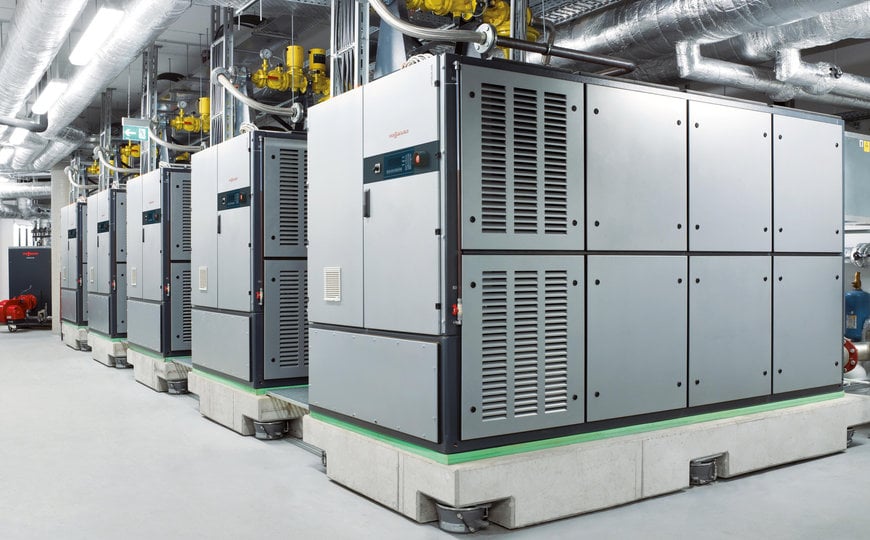CHP units a key component of the energy transition
New generation of Viessmann devices sets technological standards.

- Optimization of servicing through extended maintenance intervals
- 13 different modules with output of up to 530 kWel and 660 kWth
Climate-friendly business practices are needed now more than ever. This includes using more high-efficiency technology and renewable energy. In decentralized power generation, these are, in addition to micro CHPs with fuel cells, primarily motorized combined heat and power generation units (CHP units). In contrast with wind power and photovoltaic energy, these units generate electrical energy when it is needed and can thus balance out bottlenecks in volatile power generation. Political discussion has, accordingly, turned in recent years to flexibly operating CHP units. This is reflected in the current revisions to the German Coal Phase-out Act and the German Combined Heat and Power Generation Act (KWKG). Modern CHP units are thus a key component of the energy transition.
Number of CHP units sold slightly but consistently higher
In the past five years, the number of CHP units sold increased slightly, but consistently, overall. In 2019, micro CHP units up to 12 kWel accounted for the largest share at over 45 percent of total sales. They were followed by mini CHP units up to 50 kWel, which had a 35 percent market share. CHP units with higher outputs accounted for the remaining 20 percent.
Vitobloc 200 CHP unit for any application
With over 35 years of experience in this product area, Viessmann offers efficient gas-fired CHP units. A total of 13 different standard modules with electrical outputs of 6 to 530 kilowatts and thermal outputs of 15 to 660 kilowatts are available. The devices are designed for use in commercial and industrial buildings as well as in municipalities and residential complexes.
Technological development is crucial for market success
In recent years, there have been four main driving forces that have shaped technological development:
- The implementation of national and international guidelines for grid networks, e.g., the “Power Generating Plants Connected to the Low-voltage Grid” Application Rule (VDE-AR-N 4105).
- The implementation of national and European emission-control regulation, e.g., the 44th German Federal Immission Control Act and the European Directive on the limitation of emissions of certain pollutants into the air from medium combustion plants.
- Technological progress in engines.
- Increased customer requirements, particularly from the industrial sector, like, for example, high temperature applications and steam extraction.
In response to these requirements, Viessmann developed a new CHP unit and introduced the SCR technology for reducing nitric oxide early on, thus strengthening its market position further. The new developments include, first and foremost:
- Variations of our standard CHP unit designed specifically for individual customers’ needs, for instance, for high return temperatures (up to 80 C) to efficiently operate adsorption refrigeration machines; compact modules without exhaust gas heat exchangers for use with high exhaust gas temperatures in external heat exchangers or steam boilers; and modules with the lowest-possible noise emissions to comply with national or local emission requirements.
- CHP units with integrated SCR systems.
- The introduction of the new Vitobloc 300 CHP unit (6, 9, 15 and 20 kWel) for use in residential areas by the end of 2020.
- Improvements to and optimization of servicing for devices, for example, through maintenance intervals extended from 1,800 to 3,000 operating hours for the Vitobloc 200 EM-50 and EM-70.
- The market launch of the Vitobloc 200 EM-100 (output: 99 kWel, 167 kWth) with a motor developed exclusively for this performance class.
- The introduction of the new CHP unit ViNCI control system and the expansion of our electronics platform.
- The market launch of Vitoscada, an innovative cloud-based online monitoring system for multivalent energy systems with CHP units.
With these new developments and the product launches planned for the remainder of the year, Viessmann finds itself perfectly equipped to continue to look optimistically to the future.
www.viessmann-us.com

